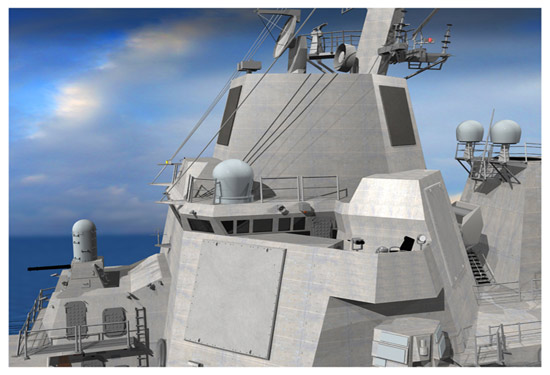
Raytheon has won a $386 million contract for the Navy’s next-generation Air and Missile Defense Radar (AMDR), officials with Naval Sea Systems Command (NAVSEA) told USNI News on Thursday.
“AMDR is the Navy’s next generation integrated air and missile defense radar and is being designed for Flight III Arleigh Burke (DDG-51) class destroyers beginning in 2016,” Chris Johnson with NAVSEA said.
The AMDR plans to be a 14 ft. aperture S-band radar (ballistic missile defense and air defense), X-band radar (horizon search) and radar suite controller (RCS) that will replace the current Lockheed Martin SPY-1D radar found on the current Burke Flight IIAs.
Under the contract terms, Raytheon “will build, integrate and test the AMDR S-band and Radar Suite Controller (RSC) engineering development models,” according to NAVSEA.
The initial Flight IIIs will use the AN/SPQ-9B as the X-band radar during the initial fielding of the radar.
The initial contract will pay for the development ahead of a test of the AMDR-S and RSC engineering development models at the end of testing at the Advanced Radar Detection Laboratory, Pacific Missile Range Facility in Kekaha, Hawaii.
“The contract includes options for procurement up to nine radars which may be exercised following Milestone C planned for fiscal year 2017. The options, if exercised, would bring the cumulative value of this contract to $1.6 billion,” according to NAVSEA.
The service has said the technology will greatly expand the ability for the Navy to prosecute BMD threats.
“It is definitely one of the key enabling technologies,” said Captain Douglas Small, Naval Sea Systems Command’s AMDR program manager, during an interview with USNI News in July. “We’re basically in the Flight III going to deliver over 30 times the radar capability for about twice the input power.”
In June NAVSEA inked a $6.1 billion, nine-ship deal, in which the service plans to procure three Flight III DDGs beginning in Fiscal Year 2016.
Raytheon competed with Lockheed Martin and Northrop Grumman for the AMDR contract.





